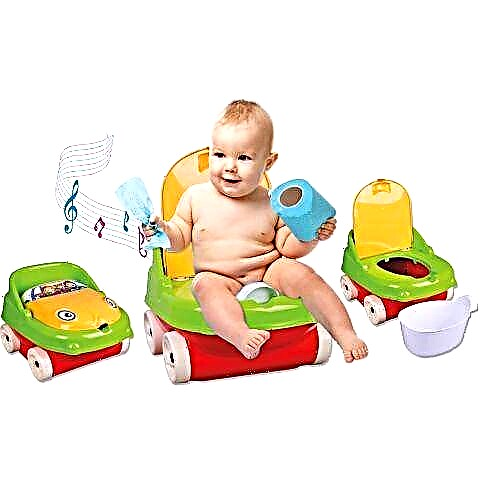
Thanks to the clinical analysis of blood in children, it is possible to diagnose and treat in time both minor ailments and serious pathologies. One of the main indicators of such a study is leukocyte formula... It displays the percentage of different types of white blood cells, including monocytes. What are these cells, what level should a child have, and what should be done if there are changes in monocytes in the blood of children?

Role of monocytes
Such cells belong to leukocytes, and since they lack granules, they, together with lymphocytes, are called agranulocytes. They are the largest blood cells, are formed in the bone marrow, remain in the peripheral bloodstream for a relatively short time (about 3-4 days), and then move to different tissues.
More on monocytes in the next video.
The most important for maintaining the health of a child are young monocytes that have just left the bone marrow.
Monocytes are needed for:
- Blood purification and renewal.
- Protecting the child's body from parasites and harmful microorganisms.
- Removal of tumor cells.
- Removing your own dead tissue, which improves regeneration processes.
For such functions, monocytes are jokingly called "body wipers", which is why their normal amount is so important for the health of children. To destroy microbes, parasites and other foreign agents that have entered the body of babies, monocytes are converted into cells called macrophages.
How and when to determine monocytes in children
In childhood, the level of monocytes is determined during a general blood test, in which it must be present leukogram... The monocyte count is indicated as a percentage of all white blood cells. Its assessment is important for identifying an active pathological process in children.

The child is sent for such an analysis:
- Scheduled once a year to prevent the development of pathologies and identify hidden processes.
- When complaints appear, for which the doctor suspects an infectious process or other serious disease.
- When complications of the underlying disease appear.
- With prolonged use of medications.
- With an exacerbation of a chronic illness in a child.
- Before performing surgery.
- To assess the effectiveness of the treatment prescribed for the child.
- Before vaccination if indicated.
Blood for analysis, which determines the leukogram and the percentage of monocytes, is taken mainly from the finger. In rare cases, the collection is carried out from a vein, and in newly born babies, blood from the heel is used.
For a reliable result, it is important that the child does not eat anything before donating a blood sample, does not drink any drinks, except for a small amount of water, does not experience increased physical activity the day before, and is calm during the manipulation. If the child was given any medications before the analysis, it is important to inform the doctor for the correct interpretation of the result.

Monocyte rate
To assess the indicator of monocytes in the blood of a child, the age of the small patient is first taken into account. At different ages, the normal percentage of such white blood cells is called:

Changes in the level of monocytes in the blood
Above normal
If a child has a large percentage of monocytes that exceeds the norm for his age, this condition is called monocytosis... It is caused by a decrease in other types of leukocytes, and in this case, monocytosis is called relative. In a situation where leukocytes in the child's blood are increased due to monocytes, this monocytosis is called absolute.
The most common causes of monocytosis in children are:
- Autoimmune processes, such as lupus erythematosus.
- Infectious mononucleosis.
- Leukemia or polycythemia.
- Ulcerative and inflammatory diseases of the gastrointestinal tract.
- Poisoning by certain substances, including phosphorus and chlorine.
- Toxoplasmosis and other parasitic infections.
- Brucellosis.
- Fungal infection.
- Tuberculosis.
- Congenital syphilis.
- Purulent processes in the child's body.
- The recovery period, when the child has had a cold or ARVI.
- Injury.
- Teething of molars or milk teeth.
- Severe bruise.
- An individual feature (with it, monocytes will be slightly overestimated, but the symptoms of the disease are not detected).

Having identified the percentage of monocytes in excess of the norm in a child, it is important to take into account the clinical manifestations (they will correspond to the underlying disease), past illnesses and other factors. After a more detailed examination, the child is prescribed a suitable therapy, which, as a result, will lead to the normalization of the level of monocytes in the blood.
Below normal
A reduced value of monocytes is called monocytopenia and is detected in such cases:
- After surgical treatment or after injury.
- With the depletion of the body.
- With radiation sickness.
- During chemotherapy.
- After using steroid drugs.
- For sepsis and other serious infections.
- With iron deficiency anemia.
- With severe stress.
Having found a very low number of monocytes in the child's blood, the doctor must evaluate other blood parameters, because this phenomenon can be observed when the number of neutrophils or other leukocytes is exceeded.
If monocytopenia turned out to be one of the symptoms of a disease, it is important to prescribe the correct treatment for the child, as a result of which the state of health will improve, and the blood test counts will return to normal.

You can learn more about monocytes by watching the following video.



